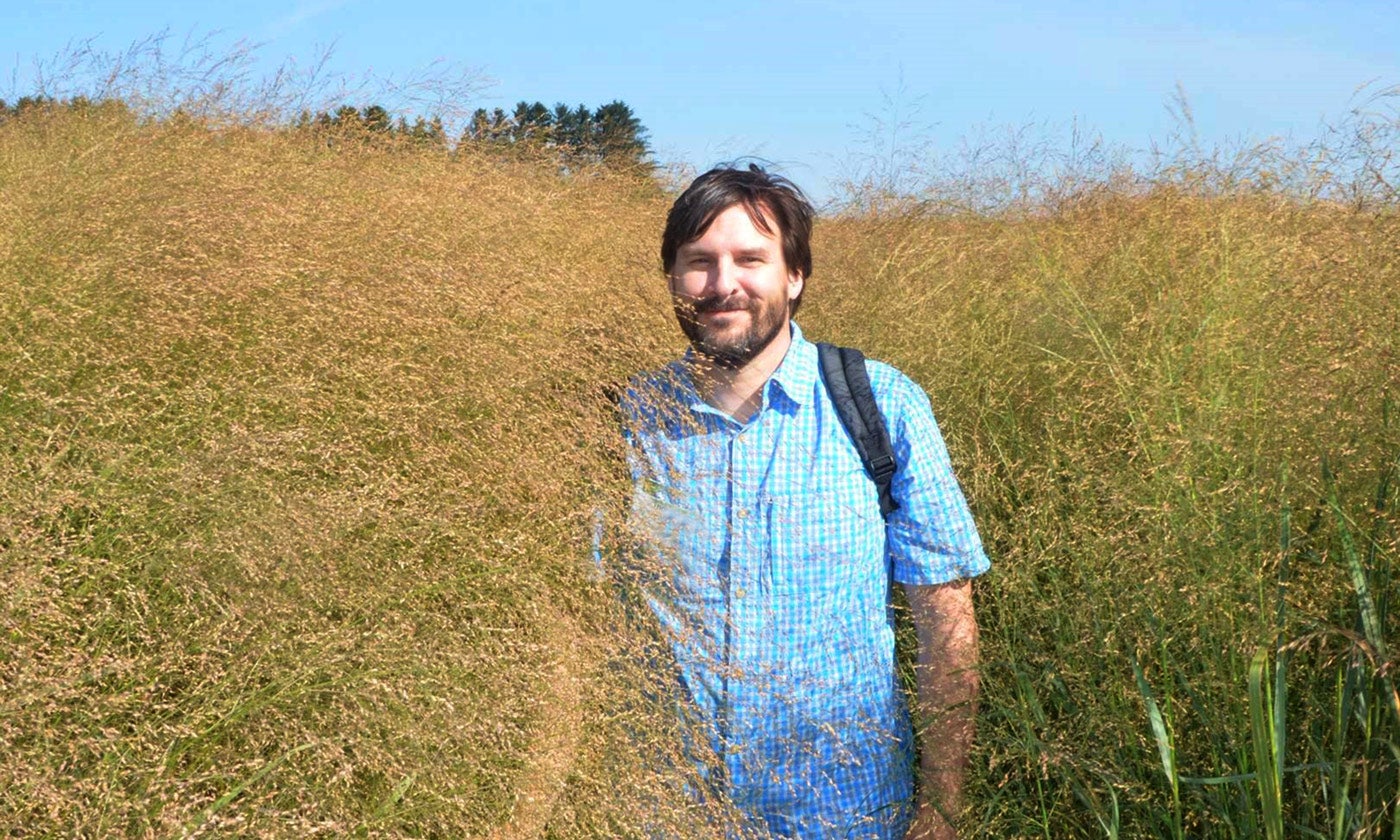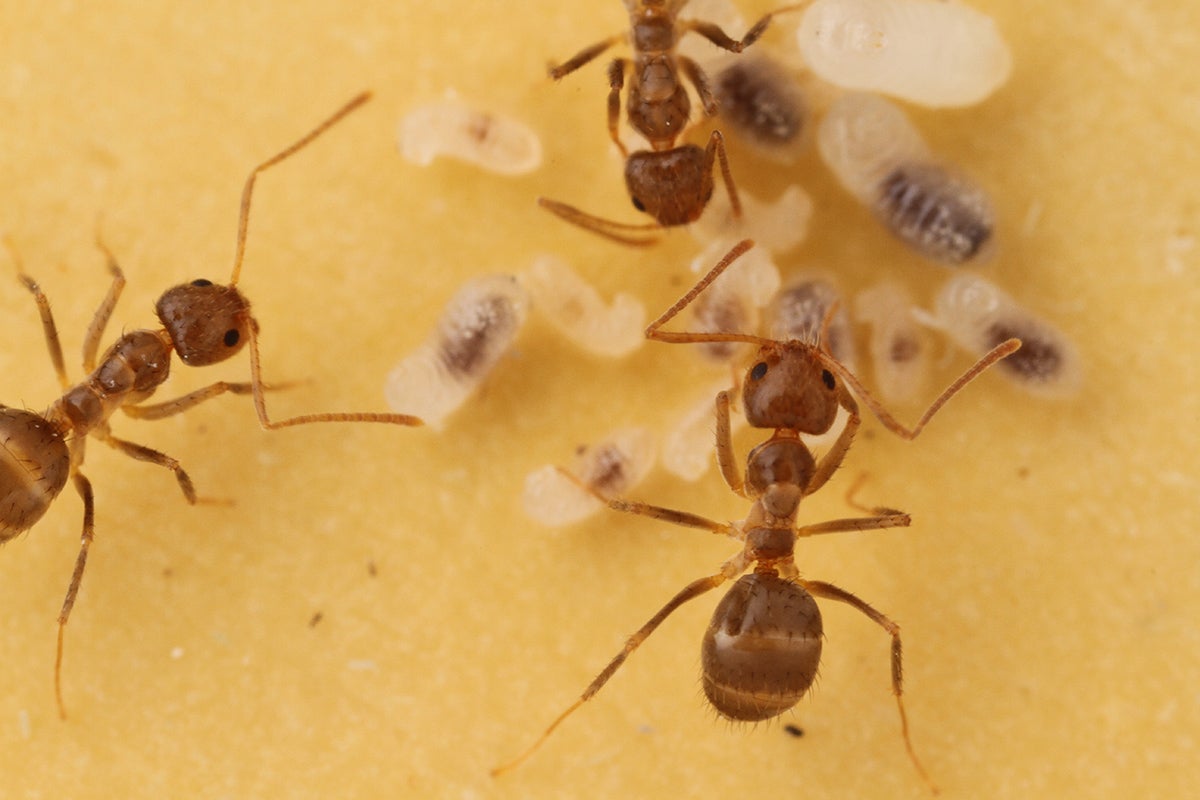Living Laboratories: Field Stations Offer Opportunities for Real-World Science
A network of field stations helps scientists understand invasive species, climate change impacts and search for potential green fuels.

Professor of Integrative Biology Tom Juenger conducts research on switchgrass at biological field stations in Texas and other parts of the country.
On a recent spring Saturday at the Lady Bird Johnson Wildflower Center, families strolled along paths surrounded by a riotous mix of bluebonnets, winecups and evening primrose. Avid gardeners stood in line for a chance to shop the center's annual native plant sale. And a teen in a glittering dress posed for quinceañera pictures beside a pond.
Meanwhile, behind the scenes, scientific research is going on that could have major impacts on how we combat climate change, the crops we grow and the fuel we put in our cars.
While the Wildflower Center is a tourist attraction and a valuable public outreach and education tool, it's also a part of the Texas Field Station Network. The network at The University of Texas at Austin also includes the Stengl-Lost Pines Biological Station near Bastrop and Brackenridge Field Laboratory in downtown Austin. The White Family Outdoor Learning Center, overseen by the Jackson School of Geosciences, is near Dripping Springs.
These living laboratories provide the opportunity for critical research and hands-on learning for students, as well as facilities for outreach to the public.
Tom Juenger, professor of integrative biology at UT Austin, has been studying switchgrass for a decade and conducts research at the Brackenridge Field Lab.

Switchgrass. Images courtesy of The University of Texas at Austin.
Switchgrass is a hardy perennial clumping grass that is native to much of North America. Its thin, fibrous blades can reach six feet in height, but its roots can sometimes growth three times as deep. While it may not be as pretty as the flowers at the Wildflower Center, it holds great potential as a biofuel source. It can be used for erosion control, particularly on the windswept plains of the Midwest, where this plant once played a critical role in the ecosystem, and as a cover for wildlife. It's particularly good at pulling carbon dioxide out of the atmosphere and sequestering it in its root system. It reseeds itself and can survive in a wide range of temperatures and soils. In places where almost nothing else will grow, there is likely a variety of switchgrass that will be happy there.
Scientists are also interested in its complex genetic code, which holds clues about how this plant adapted to climate changes in North America over hundreds of thousands of years – and how we might be able to coax our food crops into doing the same.
"Switchgrass is neat because it lets us ask all of those questions," Juenger said. "And the reason it lets us ask all those questions is it's native to North America. So, it's just a wild species and it has had to deal with climate change in the past, and it's going to have to cope with climate change in the future. Aside from being a biofuel source, it's also a great model organism for research."
In a recent paper in the Proceedings of the National Academy of Sciences, Juenger and his team studied varieties of switchgrass that contain either four or eight complete copies of their genetic code. For reference, humans have two copies of our genetic code.
Researchers found that the varieties with four copies, called tetraploids, were more specialized to their locales. While on their home turf, they are high performers in terms of growth, but the further they get from where they evolved, the more quickly they decline. Meanwhile, the varieties with eight copies of their genome, called octoploids, were generalists. They can grow in more places and much farther from their home turf, but the tradeoff is they don't grow as large.
Mapping these genetic traits and tradeoffs can allow scientists to figure out which varieties might grow best in which places and how to breed hybrids that could grow in specific harsh environments or just about anywhere.
Mapping and modeling these scenarios are extremely valuable tools for researchers. But it's no substitute for the real world.
Having field stations for research allows Juenger and his team to see how different varieties of switchgrass perform in real-world conditions. They use a network of 16 common gardens and field stations belonging to UT Austin, the U.S. Department of Agriculture, other universities and private entities that run from Central Mexico to South Dakota.
"Without sites like Brackenridge Field Lab and the Wildflower Center, we couldn't do any of our research," Juenger said.
Every plant is a data point that adds greater understanding to the complex inner workings of an organism that could have an impact on climate change.
"The more data we have, the better data we have, the better the models become at predicting how different plants will perform under different climate scenarios," said Joseph Napier, a postdoctoral fellow working on predictive models in the Juenger Lab. "Common gardens and field stations are one of the best tools we have to gather that information."



